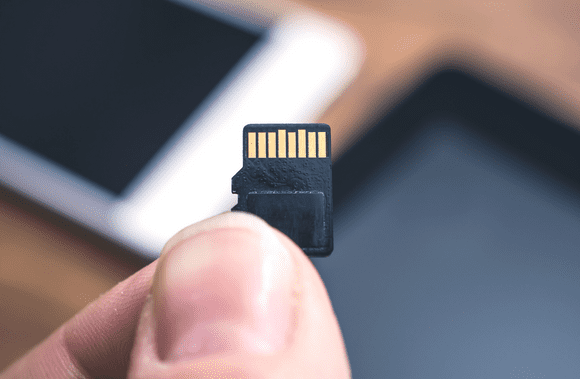An SD card in phone can supplement internal storage on your Android device if you need more space to install more apps. With Adoptable Storage, Android may treat a flash drive or other external storage device as built into the OS. The data on the adopted SD card in phone is encrypted, making it unusable with any other reader.
Flash memory cards, or SD Cards, are a handy way to transport and save multimedia files. You may need a memory card even if your Android phone has a lot of internal capacity if you want to keep any long videos shot with its high-resolution camera. On the downside, SD cards do not perform as well as other media when putting in software.
Android keeps installing apps to the internal memory and overwriting data to the SD card. So, if your phone has restricted storage space, like Android One phones, you won’t be able to download any new apps.
What is an Adoptable Storage?
I just described Android’s Adoptable Storage functionality for you. It enables an Android device’s external microSD card slot to function as its primary storage. If your phone has limited storage space, this is a great way to get around that limitation.
Adoptable Storage first appeared in Android 6.0 Marshmallow, which Google released. There were ways to get the same job done in the past. Their execution, however, was not easy.
Some important things to consider
When using an external storage medium like an SD card or USB flash drive, Android will automatically reformat and convert the file system from FAT32 or exFAT to ext4 or f2fs. It could seem appealing to use your SD card as internal storage. The flexible storage choice comes at a price, though. The benefits and drawbacks are as follows:
SD cards are slow
Unfortunately, this is the reality of very tiny memory devices. Even though they can store vast amounts of information, external drives are slower than internal ones and have a finite number of read/write cycles. The SD card’s performance would degrade with continued use as permanent storage due to the increased number of read/write operations.
Android checks the SD card’s speed to ensure it’s as fast as the device’s built-in storage. It warns about the external storage’s performance and may refuse to adopt if the SD card is too slow.
Your Android will adopt the storage
With Adoptable Storage, Android encrypts the external SD card and associates it with a particular Android device. The Android device’s internal storage is where the encryption key for the SD card is kept. Adopted storage is inaccessible since it is encrypted and cannot be used with any other device.
You may take the smartphone’s storage out and put it back in again. The apps installed on the adopted SD card will be remembered by the smartphone so that you can restore the defaults the next time the storage is connected. With this, you can insert a second SD card.
Ensure the SD card in the phone is unmounted before removing it to avoid corrupting the storage media.
You can’t install every app
You can move practically all Android apps to external storage after installation. However, the developer’s blessing is also necessary. By modifying the application’s source code with the proper properties, he can turn on or off support for adopted storage.
How to use an SD card in phone as internal storage on Android?
Android makes it simple to set up an external storage card as the primary storage for the device. Remember that this process will format your SD card, so make sure you have a backup copy of all your data, just in case.
There is still a chance that you won’t find the Adoptable Storage option, even if your device runs Android 6.0 or higher. The manufacturer may have turned the feature off. However, using command-line techniques, you can coerce a gadget into taking a storage medium.
The steps required to use an SD card in phone are as follows:
- Just pop the SD card into your Android gadget and see whether it works.
- Now is the time to open the preferences menu.
- Find “Storage” toward the bottom of the page.
- Determine the SD card’s label.
- Select a menu option by clicking the “More” button.
- Choose a Storage Layout.
- Select the “Internal” option when prompted.
- You’ll have one more chance to back out of your selection on the next screen. You can make your SD card work as internal storage by selecting Erase & Format.
- If Android notices your SD card is slow, it will alert you. To continue, please select the OK button.
- The data migration procedure can start immediately or at a later date.
- By selecting the button labeled “Done,” you can end the SD card installation process.
Once your detachable SD card has been formatted, you can use it as a “kind of” permanent storage solution. However, unlike portable SD cards, they cannot be swapped out mid-use. Please use the Eject button before attempting to remove it. It is also possible to uninstall the adopted storage, albeit not recommended, because it may cause device troubles.
How to make the SD card in phone portable again?
If you decide you don’t like what Android’s Adoptable Storage has done, you may always revert. Here are the steps you need to take:
- Proceed as described up until this point.
- You should select an SD card.
- You can access the menu by tapping the three dots in the upper right corner of the screen.
- Select the Mobile version.
- I’d like you to pick a format. The entire process should only take a few minutes.
The SD card can now serve as removable storage for any Android smartphone.
Use SD card in phone as internal storage on Samsung
Previously, we established that the capability is ultimately under the control of the device’s maker. For some time now, Samsung Android devices have not been able to embrace external storage. Nevertheless, I tried switching out the SD card in my Galaxy S10+ to see if the new One UI had changed.
In addition, Samsung has dedicated an entire website to reiterating that adoptable storage is not an option for Galaxy tablets and smartphones since it “would degrade the overall performance.”
Regardless, Samsung is rumored to consider implementing this upgrade into their devices. Let’s see what happens.
Does Android Adoptable Storage work in 2022?
The adaptive storage function, introduced with Android Marshmallow, is geared toward devices with constrained storage. At this point (2022), internal storage is not a problem. But I tried out the adoptable storage option on Android 9 and the most recent Android 10.
Using the “Format as Internal” option, I could mount the microSD card as internal storage on my Motorola phone running Android 9.
I then plugged the identical microSD card into a Nokia 8.1 running Android 10; however, this time, there was no option to use the card as adoptable storage. I’m not entirely convinced that Google has disabled that option.
I have several other Android 10 gadgets, but none have a microSD card slot. So, I have a minor issue at the moment. In any case, I’ll give adoptable storage on more Android 10 devices a shot, and I’ll report back here with my findings.
To what extent was this helpful, if at all? Please share your thoughts and opinions here.
FAQs
How about using SD cards for internal storage?
If your Android device has the capability, it’s OK to use the SD card for internal storage, especially for apps that don’t require a lot of space.
Is power required for the SD card in phone?
However, adding an SD card prevents a smartphone’s battery life.
Can I put apps on a microSD card?
Putting apps with fewer system resources on an SD card is fine.



